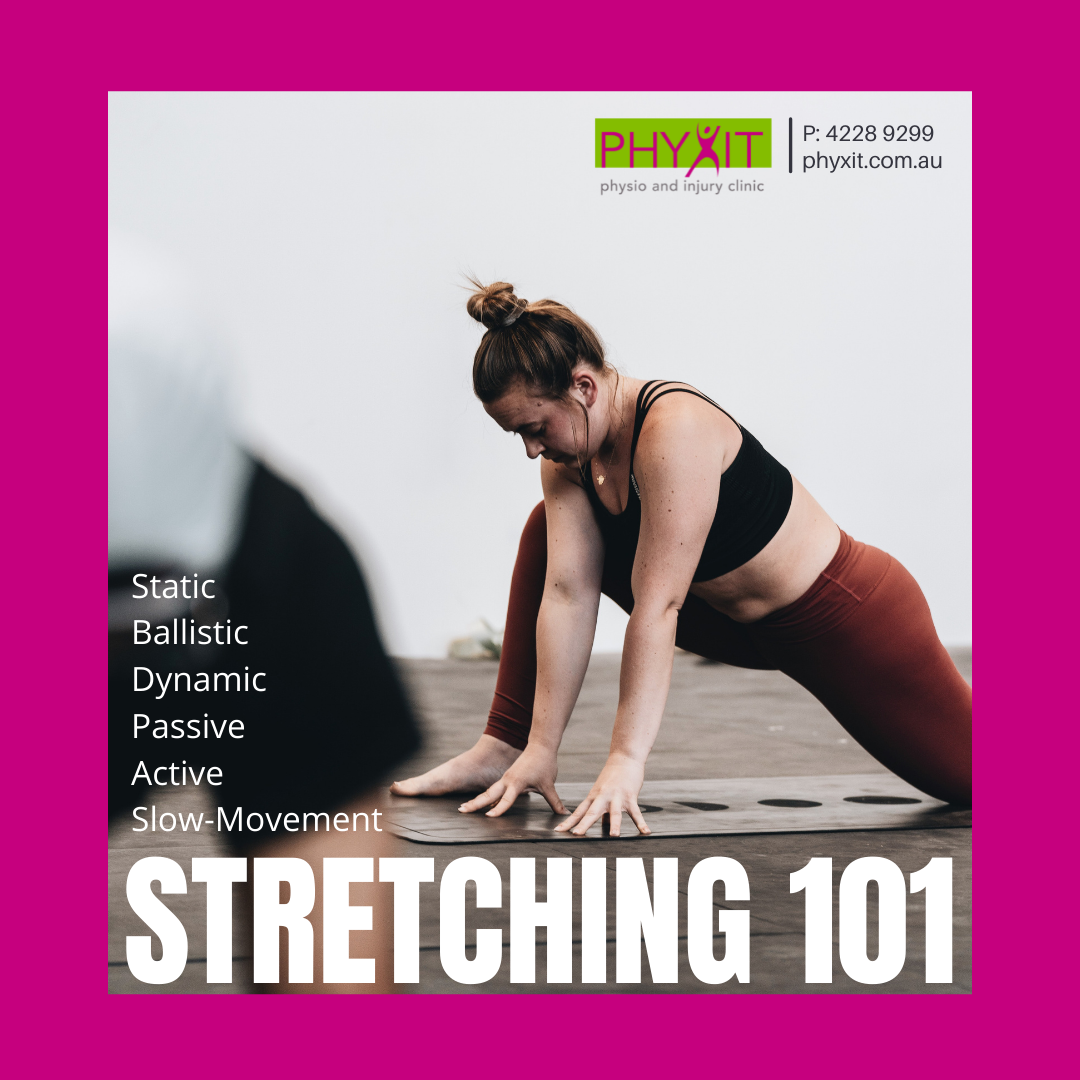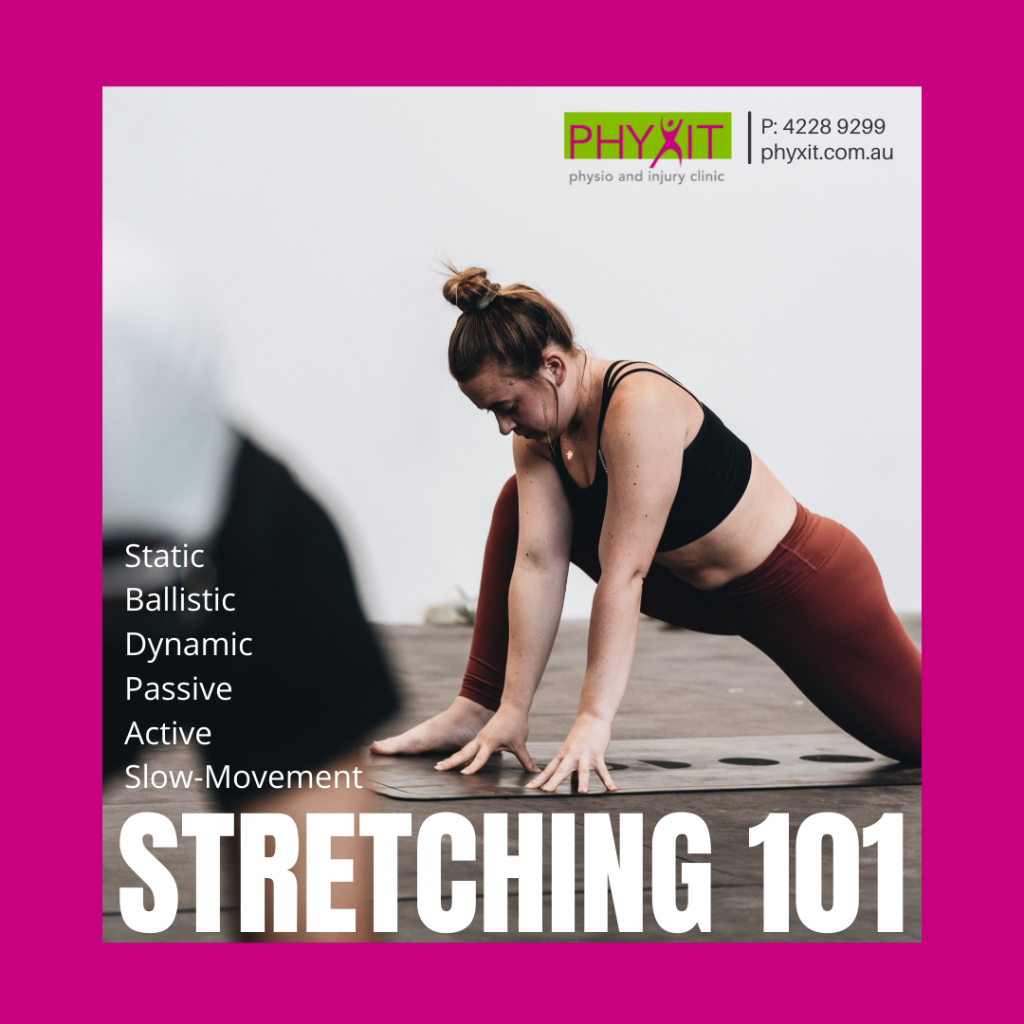
19 Oct Types of Stretches

TYPES OF STRETCHING
Here’s a quick reminder to stretch, and the most effective ways to do it!
Static: Stretching your muscles to the end point of movement, holding, releasing, then reapplying the same pressure to lengthen and release the muscles. Best post-exercise.
Ballistic: A controversial and now widely avoided stretching method using bounces and abrupt movements to encourage muscle lengthening. Overtime this has proven to have had little effect compared to dynamic and active stretching.
Active: In active stretch, the limbs and joints are stretched to a given point and held in position using an opposing muscle group. For example, to stretch your quadriceps you would bring your heel back to your buttock and hold it there using your hamstrings. This form of stretch is demanding, but effective because there is no external force applying pressure to the skeletal muscle.
Passive: during a passive stretch, you are taken through the movement by an exterior force such as a machine or partner. The risk of passive stretching is the exterior force knowing your limits, too little is ineffective, too much is damaging. Communicating with a partner during the stretch has best results.
Slow movement: Slow movements of the neck, shoulders, arms and legs can be a pre-requisite warm-up to active stretching or dynamic movements.
Dynamic: Dynamic flexibility involves controlled swinging of your limb with a gradual increase of the distance, speed and intensity, without going past a healthy range of motion, such as a split leap in dance.
